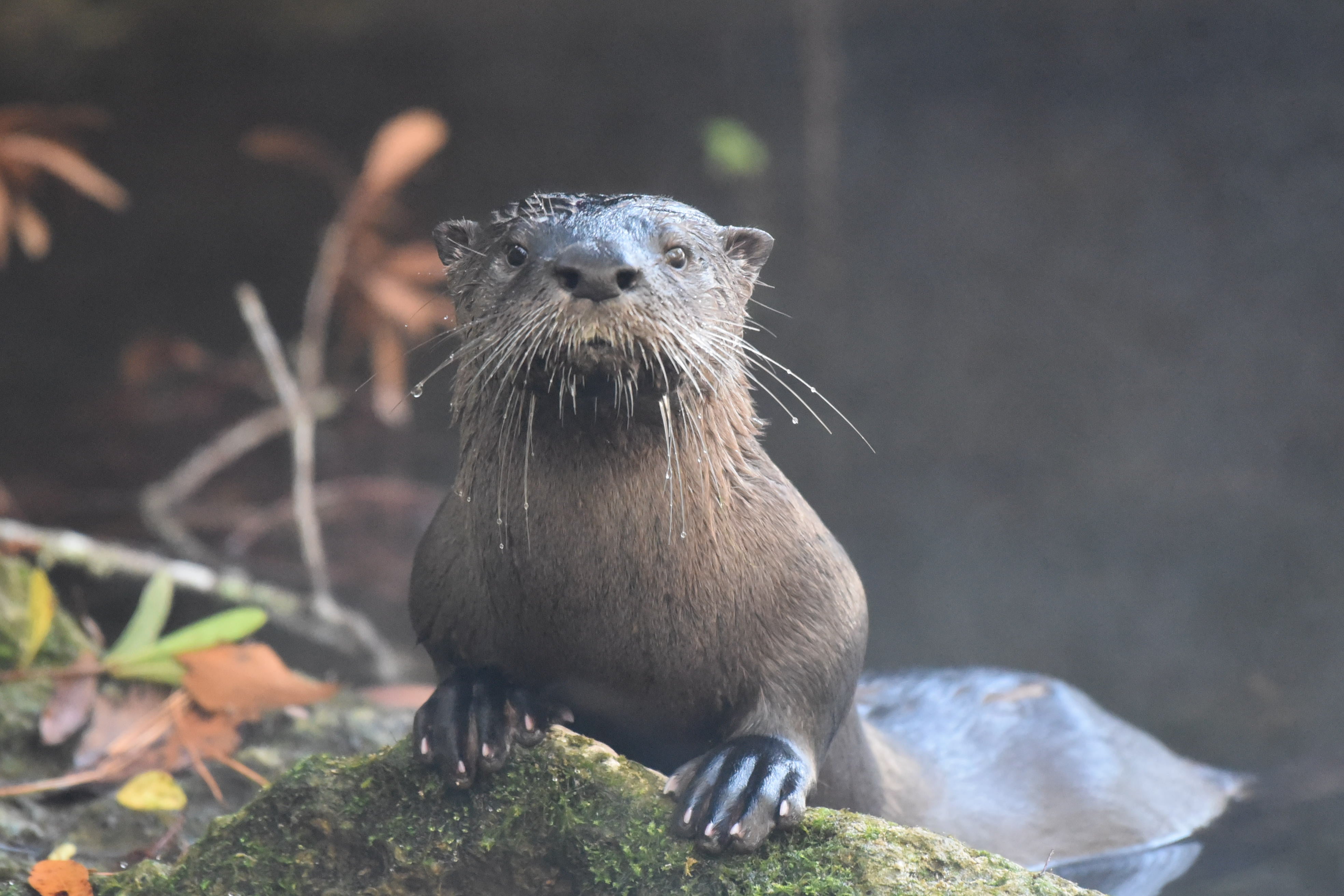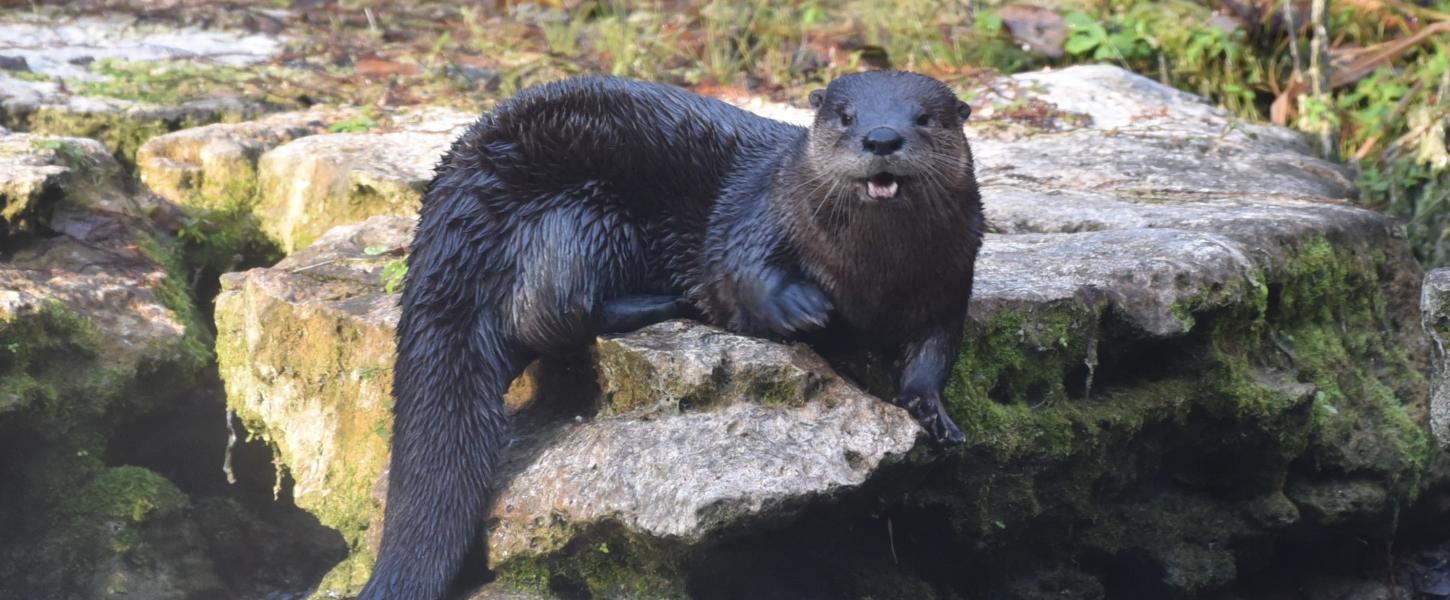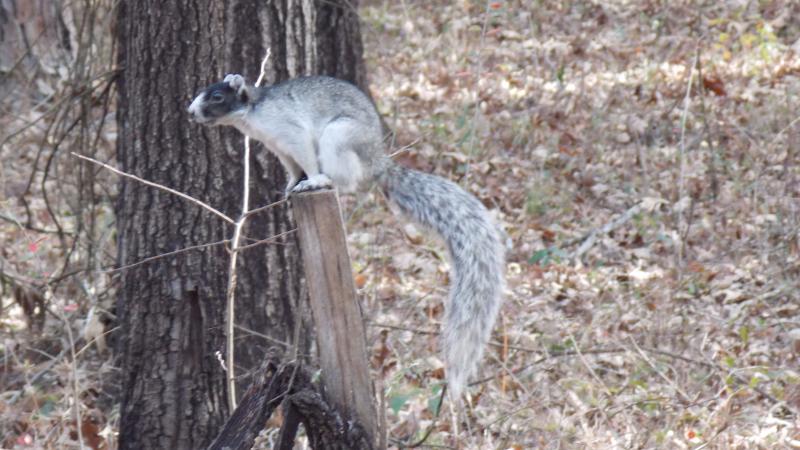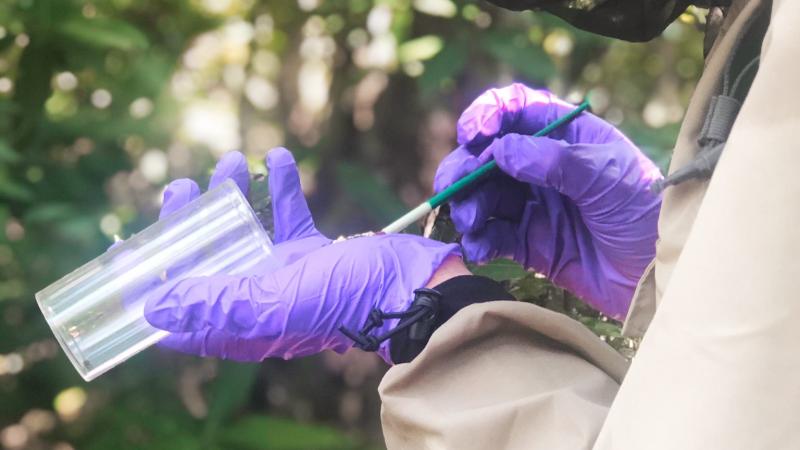
Otters at Ichetucknee Springs

Many people flock to the cool, clear waters of Ichetucknee Springs State Park to swim and relax. Those who are lucky may catch a glimpse of one of our park’s more elusive, but adorable, residents the river otter.
Relatives of weasels and badgers, river otters are slender mammals that love the water. They can be seen swimming in freshwater wetlands throughout Florida, where they use their powerful tails and webbed feet to glide through the water. They usually live in burrows dug into the riverbank, called holts, that have underwater entrances for easy access to and from the water.
River otters are predators that eat a wide variety of other species. Mostly nocturnal, their finely tuned senses of smell, sight and hearing help them find prey such as crustaceans, fish and insects. They also have sensitive whiskers on their face that they brush along the riverbed to find food hidden in the muck.
Not afraid of a challenge, river otters have even been known to eat young alligators!

Otters are naturally social animals and often can be seen in groups consisting of a mother and her young. Young otters are called kits, and females have two to five on average in a litter. Most otters are born during the spring and spend the first few months of their life underground in the mother’s holt. They have a lot to look forward to – on average, otters live for 16 years in the wild.
Otters are very sensitive to the quality of the water they live in. Pollution from mercury and other chemical compounds is one of the biggest threats to otters, and scientists can use the abundance or lack of otters as cues to the quality of the water body itself. Rangers and scientists from Ichetucknee Springs State Park and other organizations monitor the quality of water in the springs.
Make sure to do your part in keeping our springs clean and healthy for otters!


